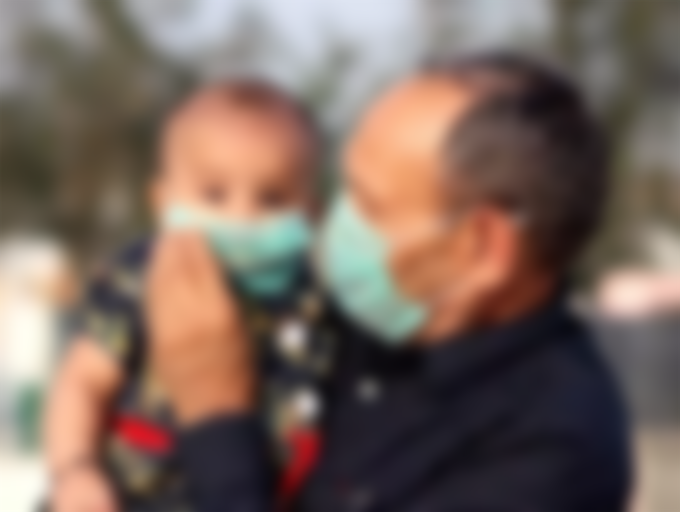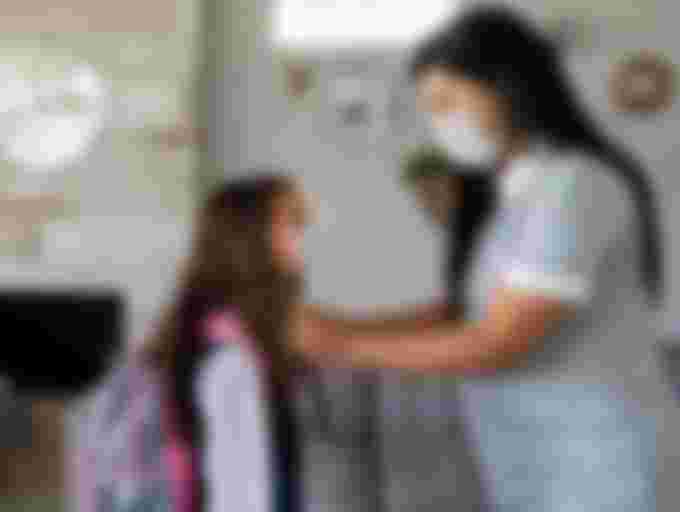
The second wave of coronavirus is causing a surge in cases. Most particularly, the B.1.1.7 and India's B.1..617 variant are said to be quite scary for the kids too- who have been largely spared during the pandemic.
As schools around India and the world open up, there have been increasing reports of children contracting the virus, which have further pushed for repeat closures.
Do kids face a high risk of catching COVID-19?

Kids, unlike adults, have a lower risk of exposure. The risk of comorbidities is also on the lower side. But what, and how exactly is the second wave fueling a rise in symptomatic infections in kids.
Are kids too prone to severe illnesses and long COVID risk? Could they pass on the infection onto adults now?
What parents need to know

At a time when children do not have access to COVID vaccines, how can parents keep them safe from the newer virus strains and waves? A leading pediatrician, Dr Vipul Malhotra, based out of Mumbai recently cleared some queries on social media:
Why is the second strain more concerning than the first one for kids?

Until recently, it was largely suspected that kids were not majorly implicated by the risks of COVID. There were only a few documented cases worldwide, and most cases were asymptomatic. However, the second wave of coronavirus has changed the way the virus could impact kids.
As the virus undergoes changes to its genetic code, so does its capability to surpass antibodies and immune defences. The distinction in spike proteins, which the virus uses to attach itself to the body and multiply could also become more aggressive and thus, cause more infections.
Dr Agarwal also adds that kids are right now also prone to the dangers of COVID-19 since the virus has gotten stronger and 'smarter' in its attack. The increasing number of mutant strains present also pose a certain risk and added infectivity which could easily infect kids. The newer COVID strains, such as the double mutant strain identified in India is for the same reason, also increasing the number of symptomatic cases in children below the age of 16.
Are kids of all ages at an increased risk?

As Dr Malhotra stresses, COVID does not see a difference in age. Kids as young as 1 or 16 could become infected by the virus. There have also been instances wherein newborn children have tested positive for coronavirus, having caught the virus from their mothers at the time of birth.
However, the only difference right now which may be possible is the difference in severity. Kids suffering from frail immunity, chronic illnesses may be more susceptible to complications associated with COVID, including MIS-C.
Can kids become super spreaders? Would they infect family members?

A lot of studies have hinted at the fact that kids the lack proper symptoms can act as silent carriers of the infection. Even right now, during the surge in cases, many believe that kids can very much act as super spreaders of the infection, and may even pass on the infection onto adults.
At the time when the virus is increasingly spreading fast, many worry that kids could carry the virus home and infect family members, including grandparents who face a high risk of severity linked to COVID-19. While vaccination may guarantee some a level of assurance and protection, gravest risks would be for the ones who would be unvaccinated.
What are the primary symptoms to watch out for?

No two people with COVID may showcase the same symptoms. This could also be true for kids, who, as experts say, show different symptoms than adults. However, with many of the infections related to COVID similar to other infections, parents must remain extremely careful.
According to experts, most kids who develop COVID may only get mild, minor symptoms of the disease. Even if they carry the viral load for longer, their symptoms may persist for lesser time. A mild fever, for example, could be a classic indication of the disease.
Some kids can also develop symptoms like gastrointestinal infection, body ache, muscle pain, runny eyes. However , they may be on the rarer side.
The symptoms can also differ amongst babies and infants. Skin rashes, swellings and other unusual changes should be checked out at once.
What should you do if a child tests positive?

Early diagnosis is the key to fighting the infection promptly. If you do suspect your child to display symptoms similar to coronavirus, isolate immediately and get tested. Most kids suffer from mild bouts of coronavirus and usually recover quickly, at home.
As for the parents, while it would be impossible to leave kids in solitary confinement for long durations, practicing extra precautionary measures could help you stay safe and care for your child. Dr Agarwal also advises parents to try double masking, maintain some distance from the infected child (if they aren't positive with the infection). Other symptoms of the infection require the same care as other viral infections which could be managed easily.
What can keep them safe right now?

While sending kids back to school is a personal decision to make, in the lack of a vaccine available right now, parents and kids must continue to practice basic preventive measures- social distancing, mask mandate and sanitation.
Big gatherings still pose a big challenge in the spread of coronavirus. Parents should remain extremely vigilant and cautious about exposing kids outside, or do so, only if proper precautions are followed. Infants and young children should be kept at home. Travelling right now, again, should be done only if essential.
What should you do if your child doesn’t wear masks?

Masks are one of the best ways to protect ourselves. However, younger kids can have a hard time keeping masks on, especially when they go out. Infants and toddlers can also get uncomfortable wearing masks for long periods of time.
To deal with matters such as these, it's important to simplify matters in front of children and explain to them the safety protocols. The same needs to be done if you have a child who is going back to school.
Again, while it could be easier to explain to big kids, with infants and toddlers, it would be best to restrict their movement, and curtail exposure in such a scenario.
What do we know about the risk of MIS-C right now

Multisystem-Inflammatory Syndrome is a rare complication of COVID that could strike kids after they have recovered from the virus. In many cases, it could also turn fatal.
Right now, the risk of developing MIS-C falls on the lower side. However, it's important that the signs and symptoms are diagnosed in time. The most common signs and symptoms include breathlessness, confusion, body pain, excruciating fatigue.
Children’s mental health is important too

Dr Agarwal also stresses that while parents safeguard children's health, mental wellness should be prioritized too.
It can be incredibly frustrating and agonizing for kids to be asked to stay home again. It could also be highly stress-inducing and impair their mental health. Experts believe that parents should engage with kids regularly, explain to them the situation at hand and attend to their queries in a simple, polite manner.
To know more about the ways you can answer your child's anxious questions about COVID and staying at home, read here. If they are still going to school, enlist and reassert the importance of following safety protocols to them.
The bottomline

It's important to understand that vaccines would not be available for kids before 2022.
While a number of studies are showing promising results, it will take a while for vaccines to be widely available for them.
Therefore, it's crucial that till the time we secure vaccines, we urge kids to remain cautious, and practice basic hygiene measures and protocols ourselves to safeguard health.












